Tradition and innovation
In the predecessor of the University of Szeged (SZTE), nobel Prize laureate Albert Szent-Györgyi served as a rector and dean. In his inauguration speech he explained what the mission of the University of Szeged was “How does the ‘fourth generation university of the 21st century’ correspond to the fourpart mission?” This question is answered by the summary of the interviews with the 12 deans of the 12 faculty Universitas.
THE FLAGSHIPS OF MEDICAL AND HEALTHCARE SCIENCES
In addition to the outstanding teaching and research activities, clinical level care is also an important task of the faculties of medical sciences at the University of Szeged. Pharmacists and assisting professions also contribute to improving the quality of life.
Measurable performances
‘The Faculty of Medicine functions as an integrated faculty of the University of Szeged, so the level of responsibility is different from when it worked as an independent institution of higher education’ emphasized Dr György Lázár, Dean of the Faculty of Medicine of SZTE. ‘We continued the tradition of the Vice Dean of the Faculty of Medicine also being the head of the Albert Szent-Györgyi Clinical Centre. This ensures the integration required for the harmonious functioning of the Faculty of Medicine.’ The EU harmonization of the old traditional curriculum was first performed at the University of Szeged of the four dentist training sites of the country – Dr Zoltán Baráth, Dean referred to one of the virtues of the Faculty of Dentistry.
‘We would like our students to feel well at the Faculty of Health and Social Sciences of the University of Szeged’ Dr Edina Berta Héderné, dean expressed her wish. ‘In our Advisory Office, students can request counselling, psychological and legal advice free of charge. We are launching a mentoring program and our tutors pay attention to our students, especially to foreign students.’ According to the Dean of the Faculty of Pharmacy Dr István Zupkó, the measurable scientific performance of the relatively small Faculty of Pharmacy is outstanding: it is the most successful branch of the SZTE based on the ratio of scientific work per researcher.
Reformed curriculum
‘There is a social demand for doctors having basic theoretical and practical knowledge, instead of their being ‘specialists’. In our reformed curriculum basic knowledge is accurately determined according to the aspects of practice-oriented training, based on clinical knowledge’ Dean of the Faculty of Medicine explained.
The Faculty of Health and Social Sciences plans to introduce electronic curricula for teaching theoretical subjects, and provides more space than before for providing more practical experience. Future paramedical experts – students of nursing, physiotherapy, health visitors and dental hygienists – will already have practical experience before starting to work with patients.
‘The training of trainers is taking place on university level, which helps our colleagues to acquire new teaching methods’ the Dean of the Faculty of Dentistry explained. The fourth and fifth year students’ training means predominantly clinical practice, based on patient care. From this point of view, the Faculty of Dentistry of the SZTE is at the forefront, not only nationally but also on the basis of European trends. Internationally renowned researchers teach the students at the Faculty of Pharmacy, for example they can learn pharmaceutical chemistry from an academician.
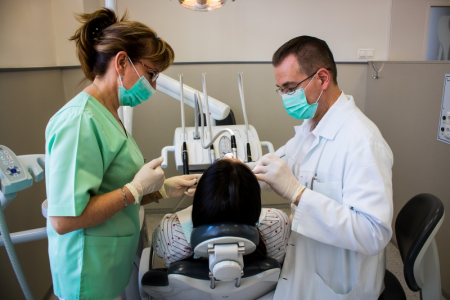
The flagships of science
‘Most of the scientific achievement of the SZTE is provided by the medical school’ Dr György Lázár said. ‘So far the international and domestic research projects have provided many opportunities. But we need to draw attention to trend changes: nowadays clinical research is underfinanced. It is the truth despite the fact confirmed by the latest survey of the Hungarian Academy of Sciences: clinical medicine is the flagship of the Hungarian science.
‘In the Faculty of Health and Social Sciences, professions are taught whose scientific acknowledgment can be traced back only a few decades. This disadvantage is offset by their lecturers participating in scientific teams within and outside the University of Szeged’ Dr Edina Berta Héderné explained. For example, their physiotherapists seek the answer to the question how the posture problems of musicians at the Juhász Gyula Faculty of Education and the Faculty of Music can be solved. Led by the Department of Social Work and Social Policy at the University of Szeged, the Faculty of Education and the Faculty of Medicine have been working on identifying the problems caused by premature birth. ‘We are involved in an application for implant development with a company in the competitive sector that helps patients with periodontal diseases to receive a new dental implant, which would help restore everyday functions, such as chewing ability’ Dr Zoltán Baráth highlighted. One of the most successful herbal medicine research institutes in Europe is the Faculty of Pharmacy of SZTE. According to Dr István Zupkó, pharmaceutical factories need the knowledge and experience accumulated by the Institute of Pharmaceutical Technology and Drug Surveillance.
The themes explored at the University of Szeged have an impact on the whole society.
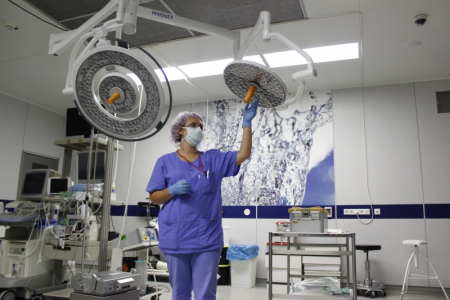
ARTS AND SOCIAL SCIENCES PRESERVE NATIONAL CULTURE
Most of the visions related to the integration in the higher education in Szeged in 2000 have been fulfilled. The most important condition of this is solidarity between faculties of the University of Szeged. Old traditions still exist: there is a close relationship between the Faculty of Arts (BTK), the Faculty of Law (ÁJTK) and the Faculty of Economics and Business Administration (GTK), which was originally an offshoot of the Faculty of Law.
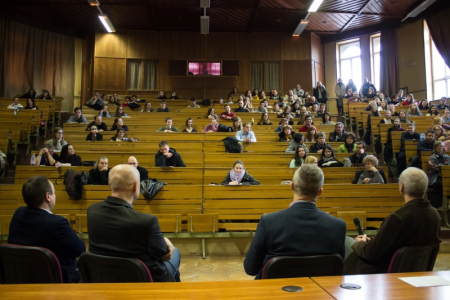
To Educate Playfully
‘We put the original diploma of the first rector, Gáspár Menyhárt, Law Professor issued in Cluj Napolca under his photograph. We refer to the past of our faculty also in this way’ Dean of the Faculty of Law, Dr Elemér Balogh said. ‘An example of the strong internal cohesion of the university is that the ÁJTK and the GTK maintain and operate a joint department.’
‘We commemorate the distinguished founders and scholars who graduated from this university or taught here. The list of names is fantastic: the very best representatives of the Hungarian culture have turned up here’ Dean of the Faculty of Humanities, Dr Zoltán Gyenge said. ‘But it is not possible to live solely on tradition. Things have to be renewed constantly. It shows our orientation to the present and future that we intend to make the values and colours of the Faculty of Arts visible on the Hungarian and European cultural maps. We have also extended the abbreviation of our name, because besides the traditional liberal arts, our courses in social sciences have also become popular.
The Faculty of Law, the Faculty of Economics and the Juhász Gyula Faculty of Education (JGYPK), among others, are all partners of the Faculty of Arts in the joint training network. This is a characteristic feature of the Universitas. However, the discontinuation of parallelisms existing for decades is also the goal of university leadership.
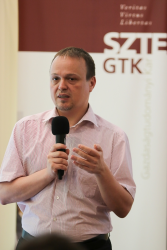
‘The Faculty of Economics is one of the most important training sites for economists in the country. We would also like to transfer this result and quality to our foreign trainings so that a valuable methodology toolkit will be associated with valuable educational content. In an international consortium, we won and became the leader of an application on gamification, designed in collaboration with our partners to work out: how economics can be taught in a playful way. In addition, we consider the role of digitization also important: in addition to the high level of applicable knowledge, our students also receive IT skills, which also means that software support belongs to many courses’ Dr Péter Kovács, dean says. A new idea of the Faculty of Economics is to invite graduates of the alma mater to student clubs and other events related to their specialties so that the younger generation can learn more practical knowledge and experience from them.
Factors Enhancing Prestige
‘The teaching of legal science is commonly considered as a national training field in Europe, therefore courses are held in the mother tongue’ – Dean of the Faculty of Law said. ‘However, we advertise optional courses in foreign-languages because the students who come here are speakers of foreign languages, such as young people studying in French at the French-speaking (Francofone) Centre. From a professional point of view, it is also important to enhance our international embeddedness. At the same time, our legal training is trustworthy because as part-time lecturers, we invite attorneys, lawyers and tax specialists, distinguished professionals of various fields. More constitutional judges and ministers teach at our faculty than in any other training institution except for the capital. This increases the international, professional, and student judgment and prestige of the Faculty of Law.’ ‘According to the Hungarian National Scientific Bibliography’s (MTMT) Hirsch index, the Faculty of Arts presents great values. Scientific performance and the lecturers’ educational quality converge. At a university of science, the importance of the high quality of scientific work has to be emphasized’ the Dean said. Workload measurement has been conducted by the Department of Sociology of the Faculty of Arts for five years now. They are glad to pass the method to other faculties of the SZTE because the results of the survey can be used for preparing and making decisions. The distance education section was first launched by the Faculty of Economics, and it is still the only one in Szeged. The development of distance learning is also a cyclical development process and it can be adapted. But running costs of this form of training are high and the construction of teaching and supplementary materials require a new logic from the trainers, as opposed to the traditional ones. This new kind of thinking is encouraged by the EFOP applications of the SZTE, which expand the existing solutions of the SZTE’s other faculties and departments that are related to the digitization of the curriculum.
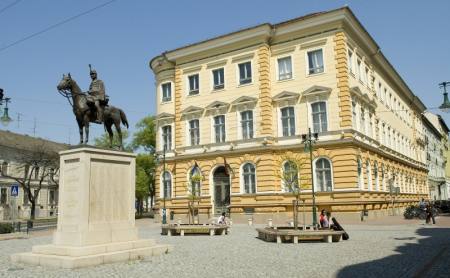
Messages about Financing
The financing of higher education was restructured by the 2016 Government Decree and since 2017 only the number of students has been taken into account, institutional quotas and scientific potential have been ignored. In other words, while in the past, the budget had three legs: the number of students, institutional and scientific norms, now only student norms exist and the other two norms have ceased. According to the heads of the University of Szeged, this is a very bad “message” because it encourages the “training” of large numbers of students with lecturers of lower academic qualification instead of supporting high quality work.
‘It is a fact that the liberal arts field is undersupported, although this field of education and discipline is the caretaker of national culture. As guardians of national culture, humanities and social sciences and the researchers of the field should not be treated as pariahs but as distinguished sciences and scientists’ the Dean of the Faculty of Arts said.
Around 2013, the drastic reduction in the number of state scholarships greatly affected liberal arts, law and economics education as well. The Faculty of Economics reacted quickly and efficiently to the new situation: it announced a new scholarship program. This program is constantly expanding: now they have connections with more than thirty companies. International training courses have begun at the faculty: today more than two hundred students are taught in English. This pattern has been followed by other faculties of SZTE also affected by the change.
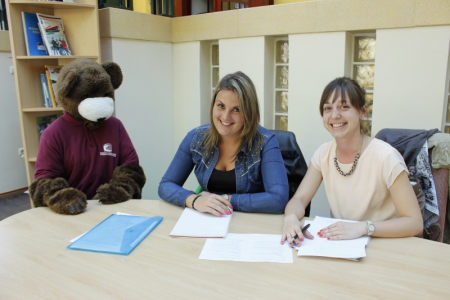
Headquarters and Community Spaces
The modernised building of the Faculty of Economics on Kálvária Avenue serves as a model with its roofed courtyard, assembly hall and intimate spaces which have invigorated the faculty’s community life.
A similar effect can be expected from the renovation of the headquarters of the Faculty of Law on Tisza Lajos Boulevard. The building, which was once a school and later a court of justice, will be renewed and will receive back its dome tower thanks to the Government’s support of 650 million forints. A memorial room will also be established to present the history of the legal education in Szeged to the public. The windows of the ground floor and the first floor corridor will be opened towards the roofed courtyard, creating a huge hall, a community space for lecturers and students where representative programs can also be organized. As a result of the reconstruction of the cellar, the club room and the buffet will have a proper place.
Without financial support, the building of the Faculty of Arts on Petőfi Avenue could only be repainted, so the renovation of this concrete building had to be postponed. However, to commence the work, a compromise needs to be reached on the future functions of the building, based on the common points of concomitant concepts. At the same time, a place has to be found in the Pink Palace of University Street for the novelties of the faculty, such as the Turkish and Kazakh group connected to the Department of Altaistics or the planned expanded Hungarian studies training, as well as the art management training organized in cooperation with the Faculty of Economics. It would improve the situation if the former gym could be converted into a cafe-like community space for readings and other cultural programs. They have begun to refurbish their classrooms from applications. They would like to renovate and modernize the Auditorium Maximum in such a way that the original atmosphere of the hall is preserved, reminding people that on October 16th 1956, the spark of the revolution started from here. The Faculty of Economics is also focusing both on the traditions and the new values of the Southern Great Plain by working with the Csongrád County Chamber of Commerce and Industry on a project to demonstrate the economic opportunities left by the city and its region unexploited. They also point out that there is a possibility for people to return to the region, even after gaining experience in Budapest or abroad because, among other things, there is a growing number of companies that settle in Szeged and its vicinity due to the fact that here is the University of Szeged, the knowledge base and training centre on which they can develop.
ENGINEERING EDUCATION HAS BEGUN
Nature sciences, technical and agricultural training courses are popular in areas where industry and agriculture are of high account.
Integration and Profile Cleaning
Engineer training is a precondition for industrial development and attracting capital to the Southern part of the Great Plain Region. Mechanical and electrical engineering are the two classical majors. The pervious is taught at the Faculty of Engineering (MK) while electrical engineers can obtain their degree from the Faculty of Science and Informatics (TTIK) of the University of Szeged. The Rural Development Agrarians program is now offered by the Agricultural Faculty of SZTE in Hódmezővásárhely (MGK).
‘The future of the Faculty of Engineering has been established by adding a technical, a mechanical and a mechatronic profile to the traditional food engineering training which we have had since 1962’ Dean of the faculty, Dr István Bíró emphasized. The long-term goal is to develop a technical profile instead of the agricultural one. The Faculty of Agriculture in Hódmezővásárhely also belongs to the University of Szeged and it enjoys many benefits of the integration. ‘For example, our model farm has been transformed into a university-owned business association and in the middle of the last decade the introduction of the Bolognese system was supported by the co-operation between faculties’ the Dean of the faculty, Dr József Horváth added. ‘In the spirit of “ one science - one university unit” it would be ideal and appropriate if the Faculty of Science and Informatics were responsible for the coordination of teaching Physics, Chemistry or Biology’ Dean of the Faculty of Science and Informatics, Dr László Mucsi said. In his opinion, it would be good if basic research were carried out autonomously, but education should be based on good research groups.
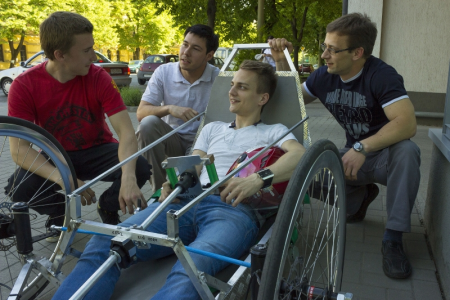
Co-operation Between Faculties
The educational strategy of the Faculty of Science and Informatics of SZTE is based on the Kolozsvár (Cluj, now in Romania) tradition dating from 1784 and the nearly 100 years of the university in Szeged, as well as on regional, national and international needs and relationships. In the past decades, IT, technical education, and high school teacher training have become involved. The faculty offers a complete range of trainings for applicants in the natural sciences and IT from basic education to doctoral programs. The establishment of specialization plans, such as logistics or industrial product and design engineering mean a new perspective for the teachers of the Faculty of Engineering that can be realised with the support of the Faculty of Health and Social Sciences and nutrition science with the support of the Faculty of Education.
The basis of cooperation within the university is teaching common subjects to the students of other faculties as well. This works well between the Faculty of Agriculture and the Faculty of Pharmacy in the postgraduate master courses on herb- and spice cultivation and processing. English-language mathematics courses are provided by the instructors of the TTIK to the students of the Faculty of Engineering. It is an advantage for the Faculties of Science, Engineering and Agriculture that their educational fields and courses are supported by the government.
Applications and Company Commissions
‘To deliver good lecturers at the faculty, a good research background is needed – Dean Dr László Mucsi said. 7 institutes of TTIK cover all the great branches of science belonging to the Faculty – Biology, Physics, Geography and Geology, Informatics, Chemistry, Environmental sciences (including some parts of technical and agricultural sciences), Mathematics and the full administration of research related to these. ‘Performance is funded through applications. We are at the vanguard in this area, not only within the University of Szeged but also nationally. The Faculty of Science of SZTE is increasing the number of its industrial commissions and research results in cooperation with nearly a hundred companies and institutions.’ Out of the technical development projects of the Faculty of Engineering, the Dean emphasized the research conducted together with SolvElectric Ltd. whose aim is to explore the possibilities of plant forcing and cultivation in artificial light. ‘ContiTech Industrial Ltd. in Makó is also an important partner and we have developed a conveyor belt for food for another company. Our colleagues have also joined a project to develop a drilling mould for dental implants.’ In the field of research and development, the Faculty of Agriculture is involved in the implementation of a cross-border, so called Interreg project coordinated by the Department of Microbiology of TTIK. According to Dean Dr József Horváth, this example also confirms that the Faculty of Agriculture is well-prepared for the beginning of a new era of Hungarian agriculture. The application of digital technologies, automation, and precision economy mean the future also in agriculture.
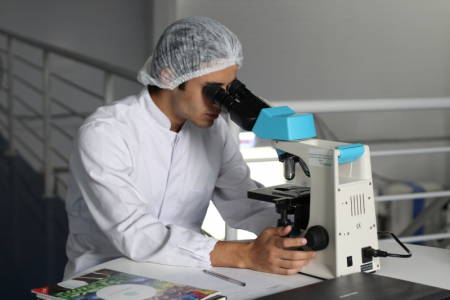
SZEGED - HÓDMEZŐVÁSÁRHELY AXIS
It is a nearly 100 year’s legacy of the University’s largest faculty that students’ training has to be organized at distant points of Szeged, in 10 school buildings and training areas. Dean Dr László Mucsi’s development priority list is the following: more research laboratory buildings related to Physics and Chemistry; a new educational building for Informatics; building a new dormitory. He thinks a supply of adequate accommodation would increase the number of Hungarian and foreign students in every faculty of the university. ‘Where a machine works, an engineer finds work’ the Dean of MK said. Dr István Bíró hopes that after Kecskemét and Debrecen, Szeged will be the next in the automotive industry investment series. He also announced that the decision about supporting the development of buildings and laboratories of the Faculty of Engineering with 5 billion forints is coming to a head. Hódmezővásárhely has maintained the tradition of agrarian education for over 120 years. It is a town with the largest administrative district of the Hungarian countryside. The Dean recommends the town to students as it provides pleasant environment for them in a rural area with dormitory accommodation and social network. According to the Dean, the operation of the faculty exemplifies that Hódmezővásárhely and Szeged belong to the same economic development zone, which, with the interlocked railway and tram line, the tramway, planned to be built by 2021, will also be made attractive to investors.
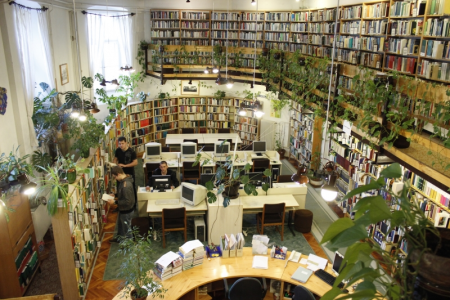
IS THE NEW FACULTY OF MUSIC GOING TO BEAR BÉLA BARTÓK’S NAME?
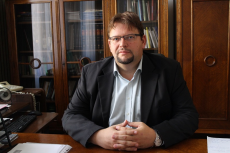
‘We want to be the best art education institution in the country and in the Great Plain-Bánság-Vojvodina region! Some people may think that the chance is small. But i know from experience that one who targets himself in the middle will fall down. We have to measure ourselves against the stars’ said the dean of the Faculty of Music (ZMK), Dr Péter Tóth. The dean Gyula Juhász Faculty of Education (JGYPK), Dr András Döbör’s ambition is that Szeged Universitas has to offer the most complete teacher training range in Hungary.
Synergies within the university
‘All the advantages of a small faculty of music in a prestigious university can be seen here’ described the dean the situation of the Faculty of Music. According to him, it is good about the similar-sized cities as szeged that people of the same interest find each other. ‘It is worth coming to Szeged instead of Vienna, because here we can get through Central European culture and the taste of Béla Bartók to students. In co-operation with the 11 faculties of the university, we manage to solve, for example, the maintenance of infrastructure or teaching certain common subjects like acoustics or art history to students of other faculties as well.’
‘The SZTE-brand was born as a result of the integration and the attractiveness of Szeged as a university city is also contributable to our mass trainings which radiate out nationwide. We consider it important to incorporate the latest scientific results into our work’ the dean of the Faculty of Education emphasized. ‘In order to strengthen the teaching and research work, young teachers are supported by a faculty grant to obtain their academic degrees.’
Talent chooses a master
The main mission of the Faculty of Education is to provide teachers and professionals with practical skills for the labour market. In addition to pursuing classical teacher training, sports and health sciences training and the art mediation activity are further strengthened. All this is complemented and supported by vocational and adult training, which offers untapped opportunities for domestic higher education’ pointed out Dr András Döbör.
The characteristic feature of art education is that a talent does not choose an institution, but a master for their development and further education. That is why it is important that artists teach at the Faculty of Music, whose names attract young talents here. But it is currently “document-based”, so art education is counter-selective. According to Dr Péter Tóth, even Ferenc Liszt could be employed only as a part-time teacher at the music academy bearing his name because he would not have the necessary qualifications for his employment. A solution would be if the state supported art education more generously and, if need, with special rules. A world-class infrastructure would also be required. The Board of the Faculty of Music has already accepted it and the Senate of the University of Szeged may approve of changing the name of the faculty for Béla Bartók Faculty of Art. It is among the dean’s plans to develop the faculty into a faculty of performing arts, providing 10 semesters’ trainings for graphic artists and sculptors, in cooperation – besides the arts and crafts training of the Faculty of Education – with several faculties of the University of Szeged. In the long run, it would also be possible to develop the framework for college level dance education, relying, for example, on the world-famous Contemporary Ballet Association of Szeged. This could be the cornerstone of the creation of the Doctoral School of Art in Szeged: the possibility for obtaining the title “Doctor of Liberal Arts”, the DLA, that is the doctor of free arts, could help increase the number of talented students who would like to participate in higher art education. The young artists might find a home in the building on Tisza lajos Boulevard, which in going to be renovated by the 2020/2021 Academic Year. Its current floor area will be doubled, its classrooms will be modernised, a state-of-the-art concert hall will be built seating 450 people and two guest apartments will be established in the attic. With this, the University of Szeged can also participate in conference tourism in addition to serving the musical and artistic life of the city and its region.
